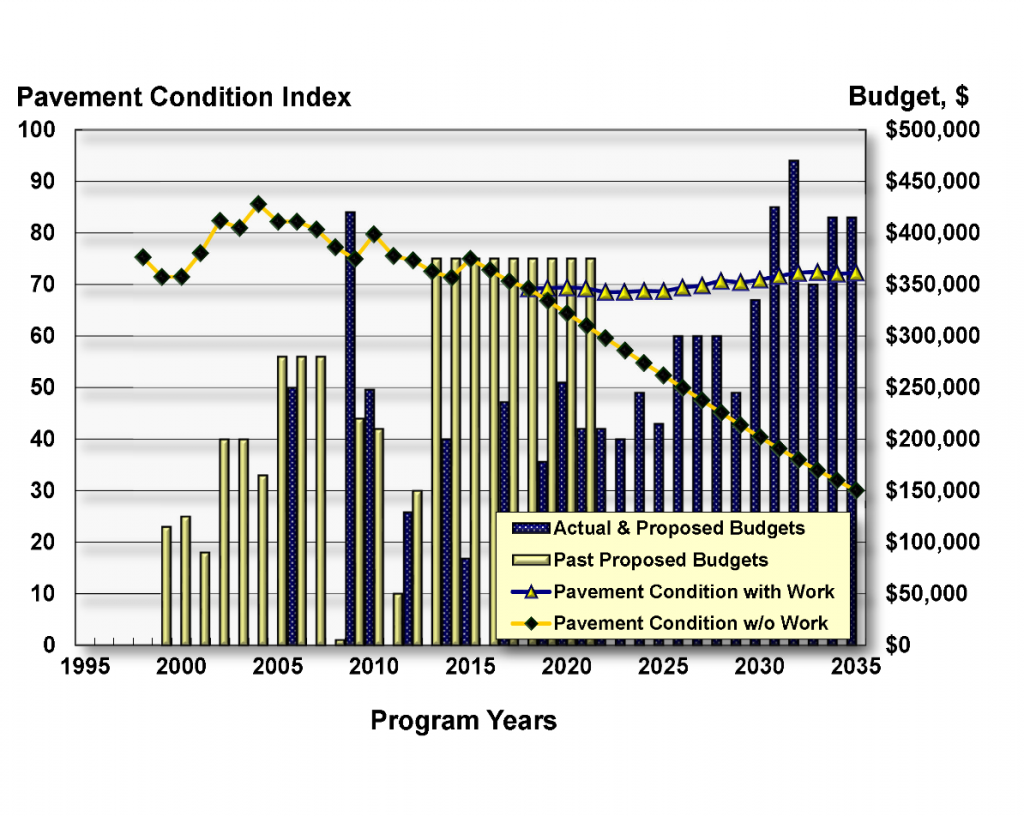
If the Zimmer report can be summarized in one Figure, it is what we call Budget & Condition. It presents four data sets plotted by year. The yellow line with solid, black diamonds is the actual, average pavement condition, PCI over time. For this example, after the 2018 data point the line represents the average PCI without rehabilitative work performed. It shows a fairly rapid deterioration rate. The black line with the yellow triangle points is the engineer’s opinion of future, average pavement condition with the proposed M&R program performed. Matching this line are the blue bars which are past actual and proposed future rehabilitation budgets. The gold bars are past, proposed annual budgets from earlier Zimmer reports. In this Figure, the current average PCI is maintained in the high 60s to low 70s for annual budgets between $200,000 and $300,000. As pavement deterioration builds by 2030 and beyond, the budgets increase which result in a slight increase in PCI.
This Figure also gives a quick executive-level review of three options.
Engage the program as presented and maintain current pavement conditions
Cut the proposed budget in half and see the average PCI split the difference between the work and no-work options.
Delay proposed work and see the average PCI follow the slope of the yellow line with solid black diamonds.
There are three ways the predicted PCI average line (the black line) can go. The proposed budgets will either improve conditions; maintain the current average; or allow a slow deterioration. This Figure can help management refine future budget levels to match corporate condition standards.
Pro tip: if the minimum acceptable pavement condition is set at a 50 PCI, the property average PCI will be in the low to mid 70s – normally an acceptable average condition.
Typically, budgets are calculated for a five-year period. And for our reports, the five-year period is the most accurate. But we want to illustrate that pavements continuously deteriorate and cost money to own and maintain, hence, we project out ten or more years, to make this point.
Figure from Zimmer Consultants.